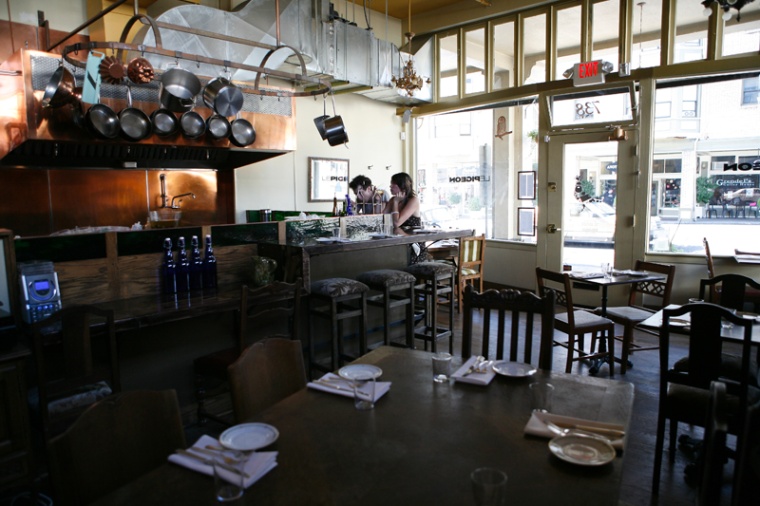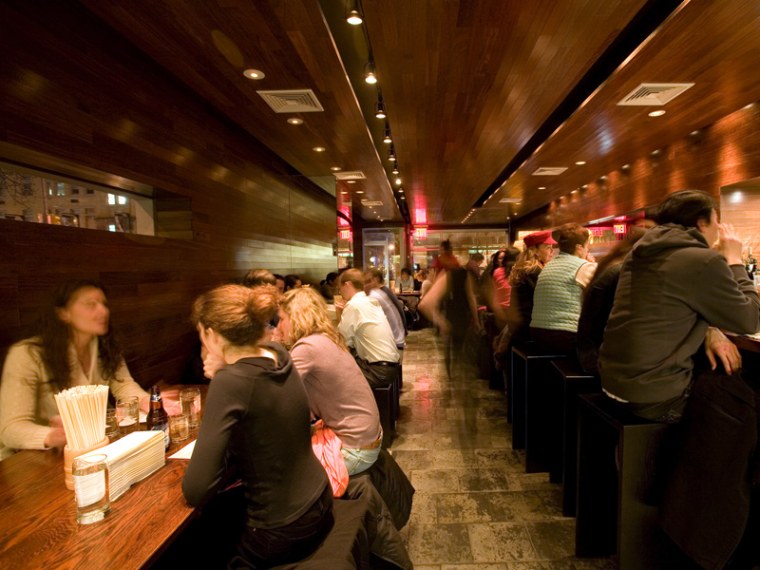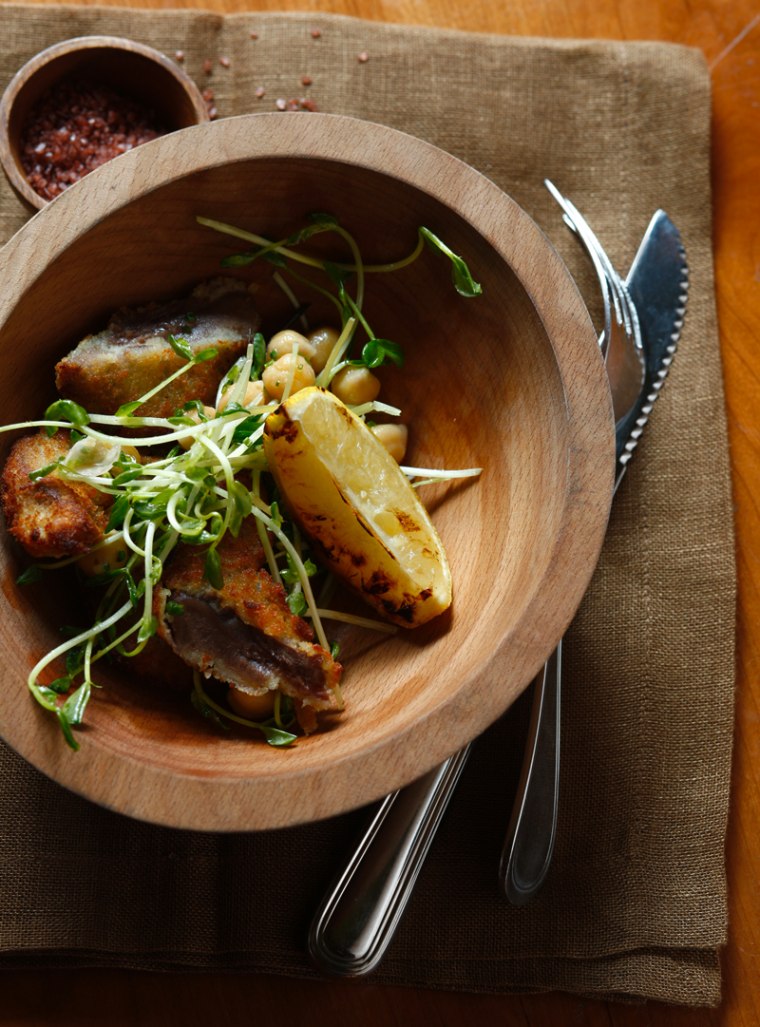Colin Alevras, chef at New York City’s Tasting Room, recently unveiled a luxury burger that blew diners’ minds. While the $23 price tag is chump change compared to the $75 foie gras-stuffed, black-truffle-topped burger at NYC’s DB Bistro Moderne, what sets Alevras’ meaty masterpiece apart is not decadent toppings but the meat itself.
The Old MacDonald burger, as Alevras dubs it, blends a grass-fed cow’s heart, liver, bone marrow, tongue, flatiron, brisket, shank and clod. It’s topped with raw cow’s-milk cheese and “mushroom ketchup,” and it’s served on a beer-bread bun. Fries are, incidentally, extra.
“I haven’t seen anybody reconsider the burger from the cow up. We don’t hide behind its casualness. We are remaking the world’s most overlooked food,” the chef recently told NYmag.com's food blog, Grub Street.
Is Alevras’ creative hamburger a weirdo anomaly? No way. Nowadays, chefs are branching out beyond meaty ribs or tender filet mignon to embrace a nose-to-tail eating ethos.
“If you’re going to kill the animal, it seems only polite to use the whole thing,” British chef Fergus Henderson famously wrote in his book "The Whole Beast," which touted the tastiness of tripe, trotters and internal organs. While many diners prefer to forget their flank steak was carved from a mooing creature, high-end dining now features a new face. Plus some hearts. And, occasionally, intestines.
“Organ meats don’t have to mean Mom’s overcooked liver,” explains Andy Nusser, head chef at New York City’s Casa Mono. The tapas-style small-plates eatery, which is owned partly by Mario Batali, offers unusual cuts—such as lamb’s tongue, duck hearts and cock’s combs. The latter is the fleshy red cap atop a rooster’s head; at Casa Mono, it’s simmered with red wine and porcini mushrooms until fork-tender.
“We’re returning to using the whole animal,” says Nusser, who has taken to sourcing entire organic pigs. “You’re not just picking up a phone and ordering parts. This makes you want to use every last bit. You don’t want to throw anything out.”
Especially not the noggin. “I really enjoy cooking a pig head,” Nusser says. “I like slowly simmering it and pulling the meat off the head, then taking the liquid it was cooked in and turning it into gelatin. It’s a journey to look at an ugly pig’s head and turn it into a beautiful terrine.”
Nusser’s adoration of long-overlooked animal parts has company. At Portland’s Le Pigeon, diners can opt for “foot and tail” croquettes or duck-duck-pigeon—roast squab with duck confit salad and duck-liver vinaigrette. Boston’s KO Prime slings sautéed calves brains and bone marrow with oxtail marmalade. Philadelphia’s Ansell Food + Wine fashions a fine, crispy lamb’s tongue served with mint.

But perhaps America’s most adventurous nose-to-tail restaurant is San Francisco’s rustic-Italian Incanto. On offer are lamb’s necks, pig trotters and a five-course nose-to-tail tasting menu perhaps including venison kidneys and chocolate-blood panna cotta. For executive chef Chris Cosentino (who also runs www.offalgood.com), it’s not about "Fear Factor"-style extreme eating. “It’s about viable cuts of meat that we have thrown into the trashcan for years. There’s been lots of talk about sustainable eating, and offal is sustainable eating. If you buy leeks, do you just throw away the tops? Or do you use them to make broth? When it comes to food, we’re very wasteful.”

Historically speaking, America wasn’t always so wasteful. During World War II, thrifty cooks stretched their ration stamps by buying cuts of tongue. In the South, pig’s hooves, fried pork skin and chitterlings (a fancy word for pig intestines) have long been integral to Mason-Dixon Line cuisine.
“We’ve gone away from our history,” Cosentino says. “Years ago, a slaughter was a neighborhood affair. One guy would come around and slaughter one or two pigs, then someone would make blood sausage. And the casing was made from the pig’s intestines. People always ask me, ‘Why do you serve poor people’s food?’ That’s really disrespectful to the animal.”
For squeamish eaters, Cosentino suggests a “gateway” meat: beef hearts. “It’s a muscle, not a filter”—like liver or kidneys—“so it’s very rich and has lots of minerals. It changes people’s perceptions.”
Harder to alter are USDA guidelines. The government bans numerous victuals like lungs that Cosentino would love to toss into a skillet. “Cow’s udder is absolutely delicious—it’s a shame I can’t serve it,” he says. “Flavor-wise, it’s a mammary gland, so it’s very rich and fatty.”
Such is the crux of whole-animal eating: Creating luxury where it’s least expected. For this reason, “cooking nose to tail isn’t a fad; it’s never going to go away,” says Casa Mono’s Nusser. “The bottom line is that people that are trying hearts and organs are surprised to find that they’re delicious. Anyone can cook it. To cook a pig’s head, you just need a big pot. Just go to a butcher and ask them to split the pig head in half, then you’re halfway there.”
